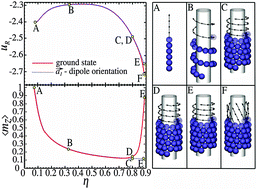A. A. Khajetoorians, M. Steinbrecher, M. Ternes, M. Bouhassoune, M. dos Santos Dias, S. Lounis, J. Wiebe & R. Wiesendanger
Nature Communications 7, 10620 (2016)
 |
| The interaction between two magnetic atoms (red/green) is mediated by scattering of conduction electrons at a substrate atom (grey) with strong spin-orbit coupling (SOC)2,15,16. The shown scattering process leads to a contribution to the Heisenberg-like exchange (J) and DM vector (D), which is oriented perpendicular to the indicated triangle constituted by the two magnetic atoms and the substrate atom. The overall J and D are given by the contributions of all substrate atoms resulting in a nonzero D=(D||, D⊥, Dz) (orientation of the components as indicated) because of broken inversion symmetry at the surface18. The orientation of the spins S1 and S2 of the coupled pair is determined by the interplay between the single ion magnetic anisotropy of each atom (Ki), J, D, and the applied magnetic field (Bz). |







